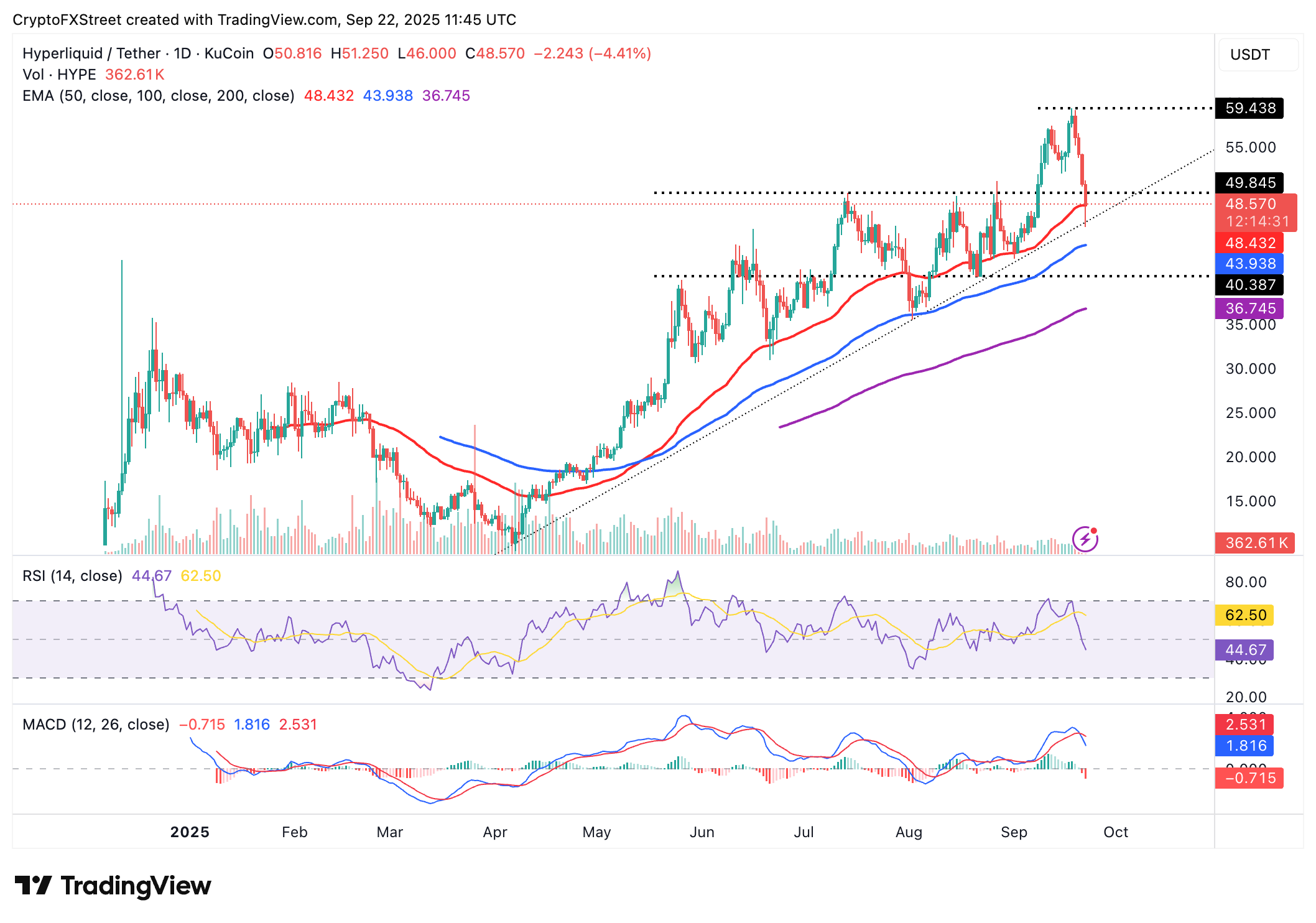Ripple Price Forecast: XRP Flashes Bearish Signals as Whales Slash Exposure in September
XRP's whale exodus triggers alarm bells across crypto markets.
Whale Wallet Exodus
Major holders are dumping XRP positions at an accelerated pace this month—creating sell pressure that's rattling retail investors. The timing couldn't be worse with regulatory uncertainty still hanging over Ripple like a bad smell.
Technical Breakdown
Chart patterns show XRP breaking below key support levels that held steady through summer. Trading volume suggests this isn't just minor profit-taking—it's a coordinated retreat from institutional players who apparently still believe in 'sell the news' strategies despite crypto's supposed decentralization promises.
Market Impact
The whale movements coincide with broader crypto market jitters, though XRP's underperformance stands out even in this shaky landscape. Watching whether this becomes a buying opportunity or the start of deeper correction—because nothing says 'mature asset class' like double-digit swings on whale whims.
XRP declines as whales de-risk
Interest in XRP declined significantly in September compared to the previous months, reflecting a risk-averse sentiment and the general perception that September tends to be a bearish month for cryptocurrencies.
According to Santiment data, wallets holding between 1 million and 10 million XRP have since September 1 reduced their holdings by 0.27% of the total supply, down to 10.48% on Monday.
A similar trend is noticeable for the cohort with 100 million and 1 billion XRP, whose holdings have decreased from 14.38 to 13.88% of the total supply over the same period.
Although percentage declines may seem small, they tally up considering the massive 99 billion XRP total supply, according to CoinGecko. If this de-risking trend persists, supply could continue to outweigh demand, potentially delaying the anticipated breakout above $3.00.
%20%5B17-1758554585768-1758554585768.42.51,%2022%20Sep,%202025%5D.png)
XRP Supply Distribution | Source: Santiment
On-chain data corroborates the loss of interest among the whales, with active addresses suppressed to around 31,000 on Monday. This is a significant drop compared to peak levels of approximately 581,000 in June.
The chart below shows that after the surge in active addresses, the xrp price broke out in June, with the rally reaching a record high of $3.66 on July 18. Higher network activity increases demand for XRP, reflecting growing adoption and improving sentiment. If addresses transacting on the protocol remain subdued, bulls will face difficulty sustaining the uptrend, keeping the breakout at bay.
%20%5B17-1758554613602-1758554613602.05.24,%2022%20Sep,%202025%5D.png)
XRP Active Addresses | Source: Santiment
Technical outlook: Can XRP defend key support?
XRP is currently holding between two key levels: The support provided by the 100-day Exponential Moving Average (EMA) at $2.83 and the 50-day EMA resistance at $2.95. Despite this short-term support, XRP exhibits a bearish outlook, as evidenced by the Relative Strength Index (RSI) declining from 61 to 44.
Investors will also consider reducing their exposure, as the Moving Average Convergence Divergence (MACD) indicator maintains a sell signal confirmed earlier in the day. This signal occurs when the blue MACD line crosses and settles below the red signal line.

XRP/USDT daily chart
If the down leg extends further below the 100-day EMA, the next tentative support lies at $2.70, tested by a candle wick earlier in the day, and the 200-day EMA at $2.59. Still, a reversal above the $3.00 level cannot be ruled out, especially if traders buy the dip, thus fuelling a price recovery.
Ripple FAQs
What is Ripple?
Ripple is a payments company that specializes in cross-border remittance. The company does this by leveraging blockchain technology. RippleNet is a network used for payments transfer created by Ripple Labs Inc. and is open to financial institutions worldwide. The company also leverages the XRP token.
What is XRP?
XRP is the native token of the decentralized blockchain XRPLedger. The token is used by Ripple Labs to facilitate transactions on the XRPLedger, helping financial institutions transfer value in a borderless manner. XRP therefore facilitates trustless and instant payments on the XRPLedger chain, helping financial firms save on the cost of transacting worldwide.
What is XRPL?
XRPLedger is based on a distributed ledger technology and the blockchain using XRP to power transactions. The ledger is different from other blockchains as it has a built-in inflammatory protocol that helps fight spam and distributed denial-of-service (DDOS) attacks. The XRPL is maintained by a peer-to-peer network known as the global XRP Ledger community.
What blockchain technology does XRP use?
XRP uses the interledger standard. This is a blockchain protocol that aids payments across different networks. For instance, XRP’s blockchain can connect the ledgers of two or more banks. This effectively removes intermediaries and the need for centralization in the system. XRP acts as the native token of the XRPLedger blockchain engineered by Jed McCaleb, Arthur Britto and David Schwartz.

